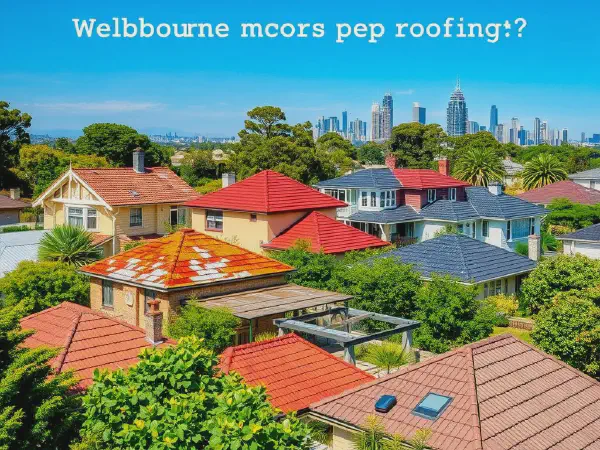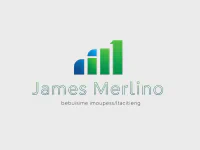Top Reasons for Roof Replacement in Melbourne: A Guide

A Comprehensive Guide to Roof Replacement in Melbourne
Roof Replacement in Melbourne is a crucial aspect of home maintenance that homeowners must consider to protect their investment and ensure the safety of their families. Whether due to wear and tear, storm damage, or outdated materials, a roof replacement can restore the integrity of your home. In Melbourne, the changing seasons and diverse weather conditions can put a strain on roofing materials, making it essential to address any issues promptly.
When considering Roof Replacement in Melbourne, it’s important to assess the age and condition of your roof. Many roofs have a lifespan of 20 to 30 years; once they reach this age, they are more susceptible to issues such as leaks, mold growth, and insulation breakdown. Determining the right time for roof replacement can prevent more significant problems and costly repairs down the line. Regular inspections and maintenance can help identify any signs of damage before they escalate.
The Roof Replacement process in Melbourne typically involves several steps, including an initial assessment, material selection, the removal of the old roof, installation of the new roofing material, and final inspections. It’s vital to engage reputable contractors who understand local building codes and regulations. Before starting the project, homeowners should acquire multiple quotes and compare different options to ensure they receive the best value for their investment.
Understanding the costs associated with Roof Replacement in Melbourne is key for homeowners. Factors such as roof size, material type, labor costs, and the complexity of the installation can greatly affect the overall price. While some homeowners may be tempted to choose the cheapest option, investing in high-quality materials and experienced installers can pay off in the long run by providing a durable and long-lasting roof.
Ultimately, Roof Replacement in Melbourne is not just an aesthetic upgrade; it is a vital investment in the safety, comfort, and value of your home. Whether you are looking to improve energy efficiency, increase property value, or simply address necessary repairs, a timely roof replacement can significantly enhance your living environment.
Cost of Roof Replacement in Melbourne
The average cost of Roof Replacement in Melbourne can range widely based on various factors. On average, homeowners can expect to spend anywhere from AUD 7,000 to AUD 15,000 depending on the roofing materials used, the size of the roof, and the complexity of the job. High-end materials and larger roofs will naturally push costs higher, so it’s essential to prepare a budget accordingly.
when it comes to durability and aesthetics, choosing above and beyond melbourne ensures your roof is truly exceptional.
Several factors influence roof replacement costs in Melbourne, including the type of roofing material selected (tiles, metal, shingles), the pitch of the roof, ease of access to the structure, and labor costs. In addition, unexpected issues such as damaged underlying structures or additional repairs required during the replacement can also increase expenses. It's advisable to factor in a contingency budget of around 10-20% to cover any unforeseen costs.
When budgeting for roof replacement in Melbourne, homeowners should start by determining what kind of roof they need based on their specific requirements and estimated lifespan. After that, obtaining multiple quotes from qualified contractors can give you a better idea of the realistic cost. It’s also wise to prioritize the quality of materials and workmanship over just the initial price in order to avoid more significant expenses in the future due to poor installation or inferior products.
investing in a quality commercial roof replacement melbourne can significantly enhance the longevity and value of your property.
Choosing a Roof Replacement Contractor in Melbourne
Choosing the right roof replacement contractor in Melbourne is critical to ensuring a successful project. Begin by researching local contractors, reading reviews, and seeking recommendations from friends or family who have previously undertaken similar projects. It is important to compile a list of potential contractors, ensuring they have experience with the specific type of roofing you require.
When interviewing potential roof replacement contractors, ask important questions that will help assess their qualifications. Inquire about their experience in roof replacement, the estimated timeline for completion, their licensing and insurance, warranties offered, and the materials they recommend. Additionally, ask for references and photographs of previous work to evaluate their craftsmanship.
To verify contractor credentials in Melbourne, check their licensing and registration with local authorities. You can also research their standing with organizations like the Housing Industry Association (HIA) or the Master Builders Association (MBA). It is advisable to request copies of insurance that protects you from liability in case of accidents during the work and review their warranties to ensure they provide adequate coverage for workmanship and materials.
Types of Roofing Materials for Replacement in Melbourne
In Melbourne, several popular roofing materials are commonly used, including terracotta tiles, concrete tiles, metal roofing, and asphalt shingles. Terracotta tiles are valued for their durability and aesthetic appeal, while metal roofing is admired for its longevity, lightweight nature, and energy efficiency. Asphalt shingles are often chosen for their affordability and ease of installation.
When considering different roofing materials, it’s important to analyze the pros and cons of each option. For instance, while terracotta tiles may provide a classic look and robustness, they can be heavy and require proper structural support. On the other hand, metal roofing can be energy efficient and lightweight but may be more susceptible to denting and noise during heavy rain. Each option has its cost, longevity, and maintenance considerations, so it’s vital to choose one that aligns with your home’s needs and your budget.
Sustainability is another crucial aspect when selecting roofing materials for homes in Melbourne. Many homeowners are now considering eco-friendly options that minimize environmental impact, such as Cool Roofs, which reflect sunlight to reduce heat absorption, and recycled materials. Investing in sustainable roofing materials not only benefits the environment but can also lead to reduced energy costs and improved comfort in your home.
Building Regulations for Roof Replacement in Melbourne
Understanding Melbourne's building codes is essential for any roof replacement project. The city adheres to strict building regulations designed to ensure safety, aesthetic integrity, and structural soundness. Familiarize yourself with local laws and regulations applicable to roofing works, including heights, materials allowed, and design standards to prevent any legal issues during or after the project.
Before commencing roof replacement, homeowners in Melbourne must obtain the necessary permits. Depending on the project scope, the permits may be obtained from the local council or building authority. Failing to secure the appropriate permits can result in fines, project delays, or complications in the sale of the property in the future.
Neglecting to adhere to Melbourne's building regulations during a roof replacement can have serious consequences. Homeowners may face legal troubles, financial penalties, and increased liabilities, especially if a roof installation poses safety risks or violates neighborhood regulations. Adhering to codes ensures that the roof not only meets safety standards but also enhances property value.
Signs You Need Roof Replacement in Melbourne
Identifying the signs that you need roof replacement is vital for homeowners in Melbourne. Common indicators include visible sagging or buckling, missing or damaged shingles, water stains on ceilings, and mold growth in the attic. If you notice these issues, it could be a sign that your roof is no longer protecting your home effectively and needs replacement sooner rather than later.
When considering whether to repair or replace your roof, evaluate the extent of the damage and the roof's age. Minor issues like a few loose shingles can often be repaired, while extensive damage or a roof over 20 years old may necessitate a complete replacement to ensure the safety and integrity of your home. Consulting with a qualified contractor can provide clarity on the best course of action.
The climate in Melbourne plays a substantial role in roof lifespan. Factors such as heavy rainfall, storms, hail, and extreme temperatures can accelerate wear and tear on roofing materials. Understanding the effect of the local climate on your roof can help you decide when it’s time for a replacement to avoid potential leaks and insulation problems that arise from weather-related damage.
